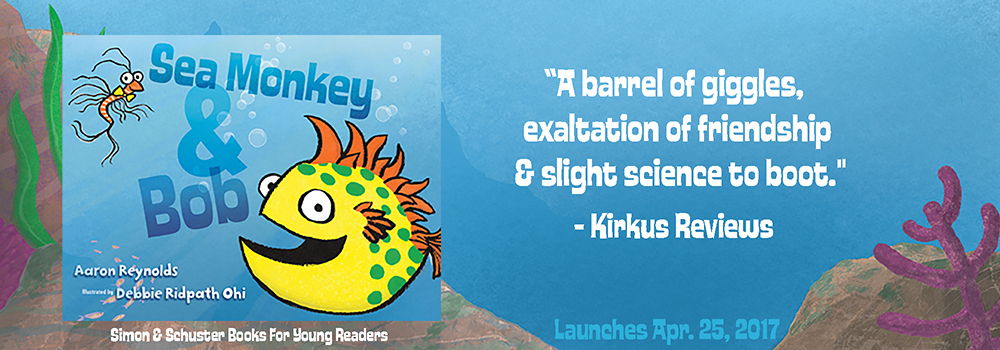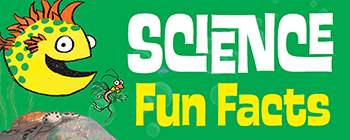Back to main Sea Monkey & Bob page
SEA MONKEY & BOB: THE SCIENCE
(Last updated April 12, 2017)
Also see the Sea Monkey & Bob video section and What Makes Things Float And Sink for more science content!
SEA MONKEYS FACTS:

Sea Monkeys are actually a hybrid breed of brine shrimp. The term "Sea-Monkey" is a brand name for a type of brine shrimp called Artemia NYOS developed in 1957 by Harold von Braunhut in collaboration with marine biologist Dr. Anthony D'Agostino.
Sea Monkeys are not monkeys. The "monkey" part of the name was apparently inspired by the long monkey-like tail.
Sea Monkeys don't live in the sea. Or at least brine shrimp don't live in the open ocean; there are too many predators. Instead, they are found in inland salt water bodies like the Great Salt Lake in northern Utah, on the rocky coast south of San Francisco, and in the Caspian Sea. They can also be found in other bodies of water with salt content, including salt swamps and man-made saltpans around the world. Brine shrimp are able to live in a wide variety of water salinity....even if the water has a 50% salt concentration! Their salty locations means there are far fewer predators BUT it also means that brine shrimp have less to eat.
Brine shrimp are born with one eye. As they grow, then two more eyes emerge upon maturity.
Brine shrimp breathe through their feet. Yes, I said feet. Brine shrimp have gills on their feet, and these gills help them handle high salt content in the water.
Brine shrimp never grow as big as the shrimp you see in the grocery store. They are only distantly related to the type of shrimp that people most people are used to eating. However, Native Americans ate brine shrimp directly for thousands of years.
Brine shrimp come in different colors. Scientists theorize that the varied colors (like white, pink, green or transparent) are probably determined by what the brine shrimp eat and where they live.
Most brine shrimp are females. Also, females are able to fertilize their own eggs without the help of the male brine shrimp. This is called parthoneogenesis.
Eggs only hatch when conditions are good. If they aren't good, then the eggs drop as dormant cysts. This is the second way that brine shrimp can reproduce; the production of cysts requires sexual reproduction. These cysts can remain viable for many years.
Brine shrimp cysts are of increasing interest to medicine, particularly in the study of dehydration/freeze-drying. "Freeze-drying could keep vaccines fresh in remote areas where refrigeration is difficult, deliver insulin to diabetics without the need for injections, or give blood products like platelets a longer shelf life. Many of these sugar-coated products have already reached clinical trials." (Source: BBC)
Brine shrimp swim upside-down compared to most aquatic animals.
Brine shrimp are attracted to the light. Because of this (also called positive phototaxis), it means that brine shrimp end to rise toward the surface during the day and sink again at night. It's also the reason that it looks as if brine shrimps swim upside-down -- their appendages point upward, toward the light.
REFERENCES AND RESOURCES:
Brine Shrimp In The Classroom: on BrineShrimpDirect.com. Includes tips on how to raise brine shrimp in the classroom.
Brine Shrimp Life Cycle - Genetic Science Learning Center.
Bring Shrimp Life Cycle - GLSEP (Great Salt Lake Ecosystem Program) website.
Great Salt Lake Brine Shrimp: includes info about why brine shrimp are important, what they eat, and how they reproduce.
Wikipedia entry on Brine Shrimp
Artemia Salina - Animal Diversity Web (ADW)
The Animal That Lives For 10,000 years - BBC Earth. Mentions the study of brine shrimp and cysts for potential use in medicine and long-term space travel.
What Are Sea-Monkeys? - on LiveScience
16 Amazing Facts About Sea Monkeys - on Mentalfloss.com
Mono Basin Paiutes: Mono Lake and Owens Valley Native Americans - Mentions that Native Americans used to eat brine shrimp.
--------------------
PUFFERFISH FACTS:
The pufferfish can inflate into a ball shape to escape predators. When this happens, it fills its stomach with water (or air when outside the water).
Pufferfish are sometimes known as blowfish, puffers, bubblefish, balloonfish and globefish. They are part of the family Tetraodontidae.
The pufferfish is not a very good swimmer. It is highly maneuverable because of how it combines its fins but is still very slow. However, it can sometimes use its tail fin for a sudden burst of speed.
Most pufferfish contain a toxic substance that makes them taste foul and are potentially deadly to other fish. In some species, the internal organs and sometimes the skin contains tetrodotoxin, which is highly toxic to most animals when eaten....and humans!
One type of pufferfish, the stellate pufferfish, can grow up to nearly four feet long. The smallest is the one inch long pygmy puffer.
Pufferfish mainly live in the tropics, with most pufferfish species typically found in shallow waters, often on coral reefs, in beds of sea grass and in estuaries. Afew freshwater species occur in tropical Asian and Africa.
Some pufferfish mainly eat plankton, but some eat invertebrates like molluscs, crustaceans, crabs and worms.
The pufferfish has excellent eyesight.
Sharks are one of the only animals that can eat the pufferfish without harm.
Some pufferfish have spines that usually lie flat against their skin. These go all spiky and erect when the puffer puffs up.
Some pufferfish can change the color of their skin to help camouflage themselves from predators.
Despite the poisonous nature, the meat of some pufferfish is considered a delicacy in Japan (fugu) Korea (bok or bogeo) and China (hetun) when prepared by specially trained chefs who know what part of the meat is safe and how to prepare it.
(Note: following video is fun but has a bleeped-out swear word at the end)
REFERENCES AND RESOURCES:
Pufferfish - National Geographic Kids
Puffer fish facts - SoftSchools.com
Puffer Fish - Science.jrank.org
Top 10 Facts About Pufferfish - IPFactly.com














